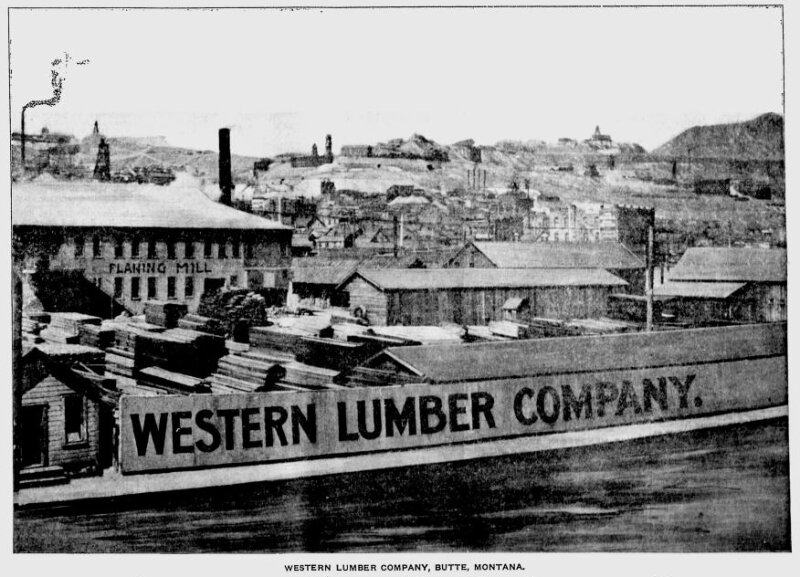Butte, America’s Story Episode 9 - The Western Lumber Company
Welcome to Butte, America’s Story. I’m your host, Dick Gibson.
Even after the brick ordinance went into effect mandating fire-resistant construction in Butte, the demand for lumber was still huge. Many brick buildings were still framed in wood, and most residences in the booming city were wood, or brick-veneered wood.
The Western Lumber Company was “one of the oldest and most successful” lumber companies in the city. W.A. Clark, ever with an eye to profit (and probably other motives), created the company in 1898 and was President of Western Lumber in 1905. Other officers were A.H. Wethey, Vice President; W.M. Bickford, Secretary; Harry W. McLaughlin, Treasurer; and W.W. Dunks, local manager. Like Clark, Wethey got around in business, and he was also Secretary of Clark’s Colusa-Parrot Mining & Smelting Co. with an office at 10 West Broadway and a home on the up-scale west side, at 834 West Granite. McLaughlin was a Missoula legislator whose support Clark was reportedly trying to buy—1898 was precisely when Clark was beginning his aggressive efforts to attain the U.S. Senate seat.
Walter Bickford’s law office was in the Silver Bow Block (the old one, where the parking lot is today across from the Montana Standard). He lived in a bay-fronted five-plex at 223 North Washington Street which is gone today. William Dunks, who lived at 817 Colorado and was a bookkeeper in 1900, succeeded O.J. McConnell as local manager about 1903. Dunks continued as the local manager at least until 1928, when the Anaconda Company acquired Western Lumber from W.A. Clark’s heirs. In 1931 and 1932, Anaconda shut the operation down.
Western Lumber together with Clark’s real estate company, Clark-Montana, were ultimately responsible for the dam on the Clark Fork River and the company town that became Milltown. They operated a small railroad in the Bonner area, with 10 miles of track, from 1912-1928. The company had sawmills across western Montana, with a planing mill at Lothrop (or Lathrop), near today’s Alberton northwest of Missoula, but most of the lumber came to Butte.
The Western Lumber complex occupied the block bounded by Main, Porphyry, Wyoming, and Gold Streets, where Butte High School stands today. By 1916, that block included an auto repair shop on the corner of Porphyry and Wyoming, pretty much where the main entry to the school is today. There were also blacksmiths and a paint shop in the block, together with a row of at least nine alley houses on the alley that’s now between the Tripp & Dragstedt Apartments and the school.
Western Lumber acquired the Montana Lumber & Manufacturing Co., which occupied the same Main St. location in 1900, but the buildings were “vacant and not used” at that time. Western rejuvenated and expanded the Butte operation. This part of town was a sort of “lumber central” for many years. The Silver City Lumber Company spread across a couple blocks around Gold to Platinum and Colorado to Dakota (at a time when Gold Street didn’t go through, 1888). There was also a small planing mill, the Phoenix, on Porphyry east of Main, where the Montana and Western Lumber Companies would expand.
Butte High School’s present building was constructed in 1936-38 on the land vacated by the 1932 demise of the Western Lumber Company, owned at that time by the Anaconda Company.
As writer Edwin Dobb has said, "Like Concord, Gettysburg, and Wounded Knee, Butte is one of the places America came from."
Please join us again for more of Butte, America’s Story.
